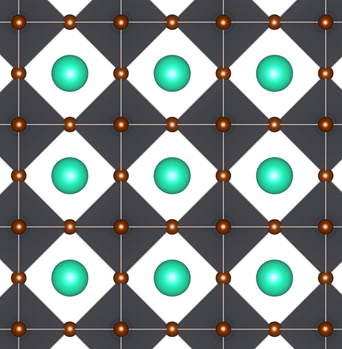
How to Improve the Efficiency of Perovskite Solar Cells
Hybrid lead halide organic/inorganic perovskite are new materials that are used to develop photovoltaic cells and opto-electronic devices, tools that transform light into electrical current, in the first case, and devices that interface between the optic and electric domains, in the second. One of the most interesting aspects of these new materials is their extraordinary power conversion efficiency, which is the quantity of light that is converted into current (in state-of-the-art photovoltaic applications this is over 23%), and their elevated photoluminescence quantum yield, which is the quantity of photons that are absorbed and re-emitted. Moreover, a further advantage of perovskite is the simple and economic mechanism to deposit films of this material, a process that is similar to that used for the production of old camera films.
These two new studies, coordinated by Simone Merloni at the Sapienza Department of Mechanical and Aerospace Engineering, have revealed the “behaviour” of perovskite, in terms of efficiency, when it is exposed to potentially stressful external factors. The results of both studies have been published on the Journal of Materials Chemistry A.
In the first study [1], which involved ten labs in eight countries, the researchers demonstrated that in the manufacturing process, the presence of impurities, such as bismuth ions (Bi3+), even in extremely low concentration (up to 10 ppm), can significantly reduce the efficiency of the photovoltaic cells. This is caused by bismuth (Bi3+) replacing the lead (Pb2+) in the crystalline structure, which, due to its greater positive charge, gives rise to both superficial formation defects that reduce the short circuit current and to more profound defects that cause a decrease in the open circuit voltage.
Moreover, one of the issues that has limited the development of perovskite-based technology is their high sensitivity to temperature, light and humidity. Prolonged exposure to these agents gradually reduces their efficiency until their functionality is completely inhibited.
However, this weakness can be transformed into a strength, as revealed by the results of the second study [2], conducted at the Sapienza Interdepartmental Research Centre on Nano-technology Applied to Engineering, in collaboration with Michael Grätzel’s research group at the École Polytechnique Fédérale in Lausanne and Dr. Mattoni of the National Research Council (CNR).
In this case, the researchers developed a protocol through which they were able to improve the quality of crystalline films by a judicious exposure to 60-80% relative humidity. The application of this protocol yields an improved conversion of perovskite reagents and the development of crystallites that are larger and more resistant to the perturbing agents. Moreover, these films absorb and emit a greater quantity of light.
“These studies,” explains Simone Meloni, “on the one hand, improve the efficiency of perovskite-based devices thanks to the application of the new protocol; on the other, they indicate that shifting from the elementary study of photovoltaic cells to their technological application will require the development of new strategies that will avoid the negative effects caused by impurities.”
References:
[1] How far does the defect tolerance of lead-halide perovskites range? The example of Bi impurities introducing efficient recombination centers - Yavari, M., Ebadi, F., Meloni, S., Wang, Z., Yang, T. C. J., Sun, S.,... & Rieder, P. - Journal of Materials Chemistry A, 2019 DOI: 10.1039/c9ta01744e
[2 ] Dual Effect of Humidity on Cesium Lead Bromide: Enhancement and Degradation of Perovskite Films - Di Girolamo, D., Dar, M. I., Dini, D., Gontrani, L., Caminiti, R., Mattoni, A., Grätzel , M. & Meloni, S. - Journal of Materials Chemistry A, 2019 DOI: 10.1039/C9TA00715F
Further information
Simone Meloni
Department of Mechanical and Aerospace Engineering, Sapienza University of Rome
simone.meloni@uniroma1.it



